1993 Geo Metro Convertible Is Our Bring a Trailer Auction Pick of the Day
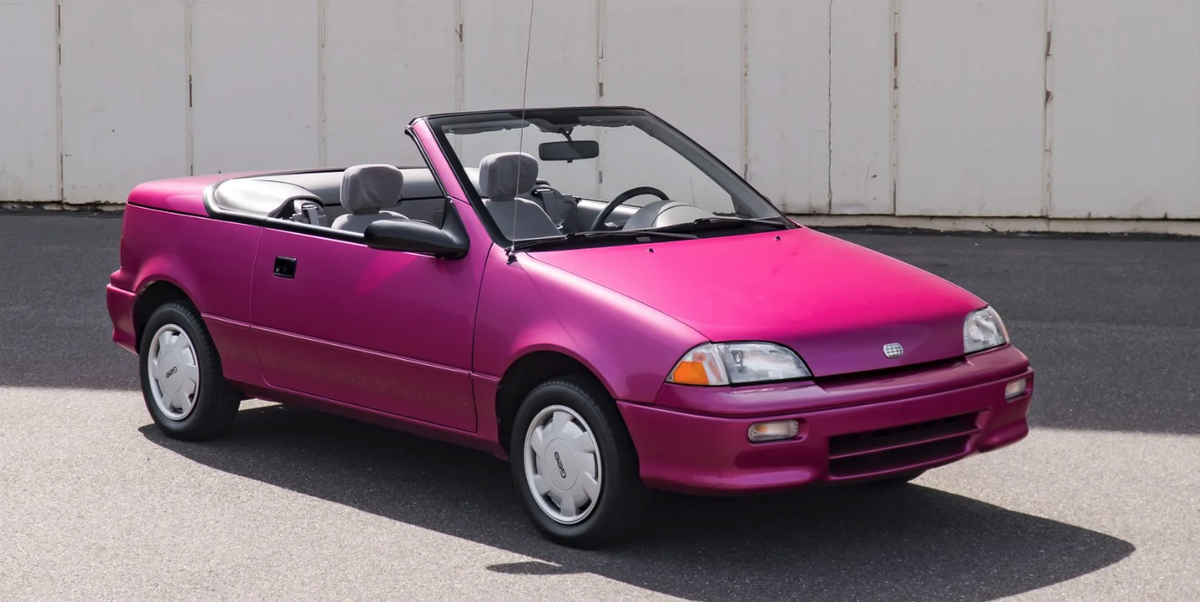
• If you’re in the market for a truly awful car from the ’90s with a 1.0-liter three-cylinder engine and 13-inch tires, has Bring a Trailer got a car for you.
• The tiny Metro was a product of long-departed General Motors brand Geo and also wore the Chevrolet badge at one time.
• With bidding set to end on Friday, April 8, the high offer is currently $5100. There could be a bargain price coming for the winning bidder.
Last week, everyone went berserk over a three-cylinder Toyota. This week, go reveal your inner freak for a three-cylinder Geo. It’s magenta, it’s terrible, and like most great terrible cars, it’s now commanding actual money on Bring a Trailer—which, like Car and Driver, is part of Hearst Autos). The listing for this 1993 Metro ends in three days, after which you will most likely be unable to purchase a similar three-cylinder convertible with 13-inch tires and 36,000 miles for what could be several months.
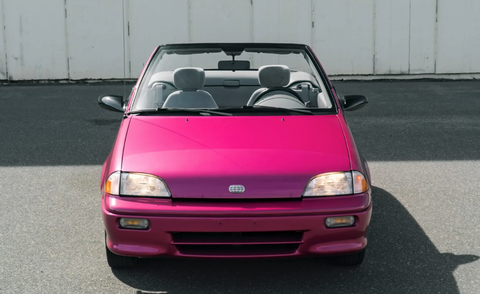
Bring a Trailer
The Geo Metro tends to come and go in the automotive news cycle. A 400-mile Chevy-branded Metro—the very last two-door hatch before production swiftly ended in 2001—sold on BaT last November for over 18 grand. Considering we bought four all at once for $4500 just a few years ago, the leading bidder is betting on a bright future. When gas prices skyrocketed to then-record levels in 2008, Metros were selling for more than $7000 (we tested one in 1992 that listed at $8670). The little cars’ ability to hit 50-plus miles per gallon was the product of physics, not any technical genius at the Suzuki plants that built them (and the Swift) from 1989 through 2001. When a motorized object weighing less than a ton cuts through the air with the engine displacement of two water bottles, efficiency is the only result.
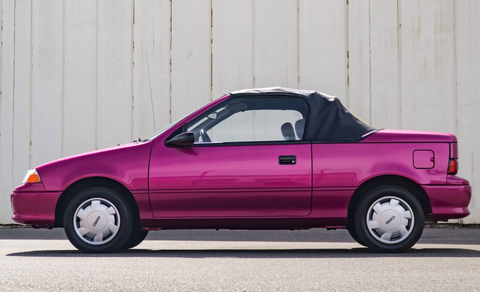
Bring a Trailer
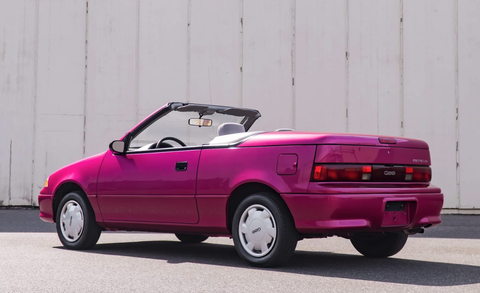
This magenta Metro LSi might appear to be resprayed—it’s bright red under the hood—but the seller and many Metro enthusiasts insist this was a factory feature. There’s also a driver’s-side airbag, air conditioning, a scrunchy black soft top, windows that roll up and down, and absolutely immaculate Geo hubcaps. The 1.0-liter three-cylinder engine has electronic fuel injection and OBD-I sensors to keep all 55 horsepower and 58 pound-feet of torque in clean shape. Everything looks original except the JVC stereo. After its purchase in California, the magenta Metro lived a quiet life in Las Vegas for the next 13 or so years until it moved to Oklahoma and then Colorado. How baby Geo got to Pennsylvania in one piece is a good question to ask in the BaT comments.
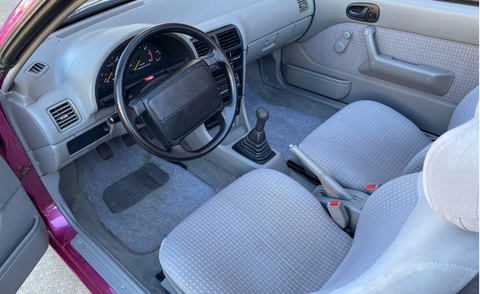
Bring a Trailer
We don’t need to ask, since we’ve driven many Metros. The Metro LSi convertible we tested for our January 1991 issue cost an astounding $11,106—that’s more than $23,000 in modern dollars—so don’t complain about new cars being pricey. And don’t yell at your own car for being slow. During a 12-car mega test in 1992, a Metro made it to 60 mph in 13.1 seconds. In 2009, a Chevrolet-branded 1998 Metro we drove as a control subject against the Toyota Prius and Honda Insight needed 2.8 more seconds. “It takes 20.3 seconds to cover the quarter-mile, roughly twice the average span that Americans will listen to Kenny G before changing channels,” wrote John Phillips. Removing the roof ensured the Metro had “all the structural integrity of hollandaise sauce atop filet of eel.” For once, Phillips was shooting for accuracy, not humor.
The next owner of the magenta Metro will miss out on power steering and service records. In their place are the original owner’s manuals, all the original keys, some burned CD in Sharpie marker, and a brochure about the Geo Satisfaction System. The auction ends on Friday, April 8. Merge with caution and enjoy.
This content is created and maintained by a third party, and imported onto this page to help users provide their email addresses. You may be able to find more information about this and similar content at piano.io



